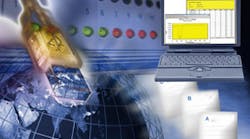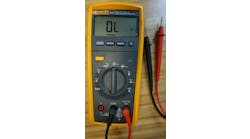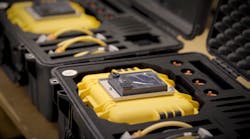The Basics of Power Monitoring Systems
Rationalizing an investment in a facility's infrastructure can be a difficult prospect for any plant engineer or technician, often requiring extensive justification. Investments that are deemed “low-risk” by upper management and have a fast return on investment (ROI) are typically the easiest to substantiate. One such investment that will pay considerable dividends over the course of its operating life is a comprehensive power monitoring system.
Even though increased energy prices have become a larger influence on the balance sheet, many facilities do not take advantage of opportunities to better manage these expenses. Those without power monitoring systems likely have no understanding of their energy usage; those with them may not be using their systems to the fullest potential. In order to optimize a power monitoring investment, it's important to understand both the intended application and energy usage priorities within the facility.
When evaluating the need for a power monitoring system — or reassessing an existing system — it's important to ask yourself certain questions.
Who needs a power monitoring system?
A properly installed and configured monitoring system is a valuable asset to almost any type of energy consumer. Energy consumers have a wide variety of considerations and concerns where energy usage is involved. This is largely due to the diversity of load types and requirements, energy consumption schedules, and the facility's level of toleration for a less-than-ideal energy source. In general, there are four basic categories of consumers: industrial, commercial, governmental, and residential. While each has a different objective for energy consumption and different expectations from its energy provider, many commonalities exist.
Energy usage/cost and the reliability of the electrical system are major concerns for most energy consumers. Different rate structures exist, depending on the category of consumer. Basic residential consumers generally incur a flat or tiered billing structure rate that corresponds to their energy usage. More complex loads, such as industrial and commercial consumers, incur more complex rate structures that typically include some variation of power demand and energy usage. Clearly, power monitoring systems become more beneficial for heavier consumers.
Monitoring systems are also very useful for consumers that have a low tolerance for electrical perturbations, such as semiconductor fabrication or pharmaceutical industries. In these cases, the consumer's need for a reliable power source may outweigh their energy cost considerations because of the expenses associated with equipment downtime (e.g., loss of product, equipment, etc.). For this category of consumer, monitoring systems are used to quickly identify and resolve problems occurring on their electrical system.
Because power monitoring systems are “permanently installed,” they operate on a 24/7 basis. Continuous logging of energy-related data provides information on the operational characteristics of an electrical system. This includes where the energy is being consumed, when the energy is being consumed, how the energy is being consumed, and what loads are consuming the energy. This knowledge can help you reduce the energy delivered to and consumed by your electrical system.
Because the quality of energy supplied to a facility can adversely affect its operation, oftentimes leading to loss or degradation of equipment, product, revenue, and reputation, plant managers must weigh the advantages of implementing a power monitoring program.
Why install a power monitoring system?
There are many benefits to installing a power monitoring system — some of which strongly interrelate with each other. A properly designed and installed monitoring system offers a deeper understanding of the operational parameters of the facility's electrical system. A close appraisal of the data generated by a monitoring system can reveal a variety of overt and subtle opportunities, including:
-
Environmental — A better knowledge of how energy is used within a facility allows you to identify an array of prospects to improve efficiency, minimize waste, and reduce energy consumption, thereby allowing the facility to be a better steward of its allotted natural resources.
-
Reliability — Assessment of data from the monitoring system can reveal existing or imminent issues that can adversely affect the operation and product within a facility. Historical data from power monitoring systems can help locate and correct both acute and chronic problems, resulting in increased productivity.
-
Maintenance — Data trends can forecast and notify the appropriate people when discrete equipment parameters may be exceeded, allowing you to plan ahead instead of facing an unscheduled shutdown.
-
Safety — Monitoring systems can limit the exposure of personnel to potentially hazardous electrical environments by providing remote status and operational parameters of equipment within hazardous areas. Some monitoring devices also offer a variety of additional parameters (temperature, pressure, flow rate, vibration, status indicators, etc.) through the use of transducers.
-
Financial — Each benefit discussed above either directly or indirectly influences a business's bottom line. In most cases, the monetary impact from even one or two benefits can quickly justify the purchase and installation of a power monitoring system.
Additional advantages offered by power monitoring systems may include features such as accurate evaluations of spare electrical system capacity, billing allocation and validation, or optimum placement of mitigation devices. Once you decide if a power monitoring system makes sense in your particular situation, the next step is narrowing the field of choices.
What equipment should be installed?
A true power monitoring system contains two or more discrete metering points that are interconnected through some medium. The three primary components of a power monitoring system include: 1) discrete metering devices to record data, 2) software to accumulate, manage, and display the data, and 3) a communications interface between the software and metering devices. The monitoring system components should be compatible to ensure that the greatest benefits are realized from the system. There may be other ancillary components, but these are defined by each specific power monitoring system's requirements.
An array of metering devices, available in all shapes, sizes, and levels of complexity, is commercially available. Selecting an appropriate metering device requires an understanding of the intended application of each device and the goals for the entire power monitoring system.
Low-end metering devices generally provide basic measurements, including voltage, current, real and reactive power, power factor, and energy usage. These relatively inexpensive options are typically limited in their functionality and expandability. Low-end metering devices may be manufactured with less expensive components, resulting in reduced accuracy.
High-end metering devices, on the other hand, are more complex, offering a variety of features. In addition to measurements provided by low-end meters, these devices can perform many sophisticated tasks, such as disturbance detection and location, automated alarm configuration, harmonic distortion analysis, flicker detection and location, high-speed transient detection, and anti-aliasing. High-end metering devices are usually manufactured with greater precision components and are intrinsically more accurate than low-end metering devices; however, they are also more expensive. Ultimately, the choice of one device versus another should depend on the intended application of that device or system as well as your budgetary constraints.
Evaluating data from monitoring devices is more easily and efficiently performed with personal computers than at discrete monitoring devices. Software allows you to not only view data from discrete devices, but also to perform complex analyses at a system level. The software provides a means to log data in low-end devices without logging capabilities. It can also be configured to aggregate data across a single or multiple monitoring system(s). You can also view alarm data from any discrete device on the monitoring system at a single point — the personal computer. Generally, data is uploaded from discrete metering devices into a computer server that houses the power monitoring system's administration software. However, some systems allow the end-user to host data in one or more discrete metering devices and to access that data via a Web browser.
Interaction between discrete monitoring devices or between the software and monitoring devices requires both a medium to carry the information and a protocol that enables the sending and receiving of information. The communications medium may be a continuous physical link, a wireless link, or some combination of the two. Although today's primary medium is a copper wire link, the use of both wireless and optical fiber links is becoming more prevalent. Wireless links are more convenient than copper wire links because there is no need for a physical cable while optical fiber provides improved isolation from electromagnetic phenomena.
Protocols provide a common convention for power monitoring system components to communicate with each other. Power monitoring systems components that use a disparity of protocols will be unable to effectively exchange information. Monitoring device manufacturers may use proprietary protocols or open-source protocols. The advantage of using an open-source protocol is the software can be configured to read data from monitoring devices made by various manufacturers.
Once you've identified a need for a power monitoring system and selected appropriate equipment, it's time to determine the best placement.
Where should the equipment be installed?
One philosophy is to install high-end metering devices at the main electrical switchgear and less sophisticated metering devices further into the electrical system. This approach is taken when you want to understand the quality of the energy provided by the electric utility while also grasping basic electrical characteristics within your facility.
Another philosophy is to install metering devices that correspond with their application throughout the facility. Sensitive consumers rely on this more expensive approach to understand both their energy usage and the quality of their energy throughout their facility. Monitoring large loads may allow you to identify energy savings opportunities while simultaneously identifying electrical parameters that could damage the load or affect the product. It should be apparent that more monitoring points will provide a better model of the electrical system.
Why make the investment?
As with any investment, the decision to purchase a power monitoring system should be thought out carefully. By recognizing your primary objectives and considering all of the factors explained in this article, you can choose the components of a power monitoring system with confidence — designing and building an effective solution that will pay dividends for years to come.
Bickel is a senior staff electrical engineer with Square D Co. in LaVergne, Tenn.
Sidebar: Power Monitoring Promotes Energy Efficiency on Campus
With many of today's universities and colleges resembling a small city rather than a campus, energy needs in such educational settings have become demanding, to say the least. The largest university in San Diego and the third largest in the state of California, San Diego State University (SDSU) is a prime example. When you take into account the state's well-documented history of energy issues, including consistent power shortages and outages, it's easy to see how sub-par reliability could cripple the sprawling campus.
SDSU's energy infrastructure includes a co-generation plant, which combines two combustion turbines capable of 5.2 megawatts each. The steam generated goes into campus heating and cooling, with the excess going into a generator to produce electricity. In this manner, the plant is capable of providing all power needed by the campus. On average, SDSU ends up exporting 125,000 kilowatt hours or 50 to 100 kW in extra power each month to its utility (San Diego Gas & Electric). But things weren't always this way.
Fifteen years ago, the university made the decision to commission a massive energy infrastructure project. A large and important part of this project included the installation of power meters and circuit monitors to provide power monitoring capabilities. The addition of power monitoring was a response to several issues. There was the inefficiency of wasting electrician man-hours investigating problems that may or may not have existed within its infrastructure. SDSU was also experiencing power quality issues, such as sags in voltage, which can cause equipment to be damaged. Furthermore, there was the necessity of monitoring operations at its co-generation plant. With power monitoring in place, SDSU would have the capability to monitor how much electricity the co-generation plant produced and work to avoid exceeding the usage and demand thresholds designated by the local utility.
SDSU uses its power monitoring system today for power management, power plant operation, billing information, event verification, and troubleshooting. Because of the system in place, SDSU has been able to monitor efficiency and troubleshoot problems quickly with direct access to real-time and historical data through a simple Internet connection. The power monitoring system and co-generation plant have helped the university realize roughly $2 million in purchased energy costs over the course of a single year. SDSU's reliability has improved while simultaneously reducing maintenance costs. The University uses its power monitoring system to maintain the campus load and provide supplemental power at the request of the utility. It also uses the system to monitor and control local system frequency. Higher resolution historical data is used to evaluate other potential savings opportunities — something the utility's data could not provide.



